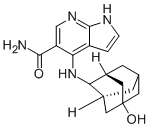The difference between claudin-low, glioma Mes and C5 was revealed by anti-correlation of transcriptional profile and pathway profile, distinct pattern of EMT signature enrichment and opposite pattern of pathway enrichment. Such difference may be explained by the fact that C5 had strikingly low CD3+ and CD45+ cell infiltration in both tumor and stroma. Immune-related processes may be relatively less involved in the acquisition of a mesenchymal trait in C5. For two potential mesenchymal subtypes, C1 was associated high stromal response and high number of stromal CD3+ cells while S1 was characterized by TGF-beta induced Wnt activation and enrichment of an EMT-related gene set. The type, location and level of tumor infiltrating lymphocytes remained unclear in Hoshida’s S1. Whether S1 and C1 were truly mesenchymal subtype required experimental validation. ��Complement and coagulation cascades’ was an interesting process since perturbation of this pathway was observed in eleven subtypes including upregulation in C1, Mes, claudin-low and downregulation in C5, S1. Complement activation could potentially be a very important event in anti-cancer immunity and immunotherapy as it could not only help in tumor clearance but also promote tumor growth. Previous studies have also implicated an association between EMT and complement system. For example, C5b-9 could induce the expression of Response Gene to Complement-32 which could in turn enhance metastatic phenotype by mediating TGF-��-induced EMT in human pancreatic cancer cell. In addition, Tang Z et al showed that tubular epithelial cells exposed to complement anaphylotoxin C3a adopted phenotypic and functional characteristics of mesenchymal cells. Coagulation disorders are a common  problem in neoplastic patients. A hypercoagulable state could be induced by malignant cells interacting directly with hemostatic system and activating the coagulation cascade. Thrombin was formed by proteolytic cleavage of the coagulation factor II in the coagulation cascade and acted in turn as a serine protease that converts soluble fibrinogen into insoluble strands of fibrin, as well as catalyzing many other coagulation-related reactions. It was already reported that thrombin could support tumor cell malignancy. Tumor cells could express tissue factor which consequently interacts with coagulation factor VII and coagulation factor X to generates thrombin to enhance tumor progression. In summary, the dysregulation of complement and coagulation cascades in a total of eleven subtypes across five tissues implicated that further study of this process could possibly motivate novel immunity-based strategy for personalized therapy. Nitrogen-containing bisphosphonates, which are synthetic analogs of pyrophosphate, are an effective treatment for osteoporosis, hypercalcemia of malignancy, osteolytic lesions in multiple myeloma, and bone metastases from solid tumors.
problem in neoplastic patients. A hypercoagulable state could be induced by malignant cells interacting directly with hemostatic system and activating the coagulation cascade. Thrombin was formed by proteolytic cleavage of the coagulation factor II in the coagulation cascade and acted in turn as a serine protease that converts soluble fibrinogen into insoluble strands of fibrin, as well as catalyzing many other coagulation-related reactions. It was already reported that thrombin could support tumor cell malignancy. Tumor cells could express tissue factor which consequently interacts with coagulation factor VII and coagulation factor X to generates thrombin to enhance tumor progression. In summary, the dysregulation of complement and coagulation cascades in a total of eleven subtypes across five tissues implicated that further study of this process could possibly motivate novel immunity-based strategy for personalized therapy. Nitrogen-containing bisphosphonates, which are synthetic analogs of pyrophosphate, are an effective treatment for osteoporosis, hypercalcemia of malignancy, osteolytic lesions in multiple myeloma, and bone metastases from solid tumors.